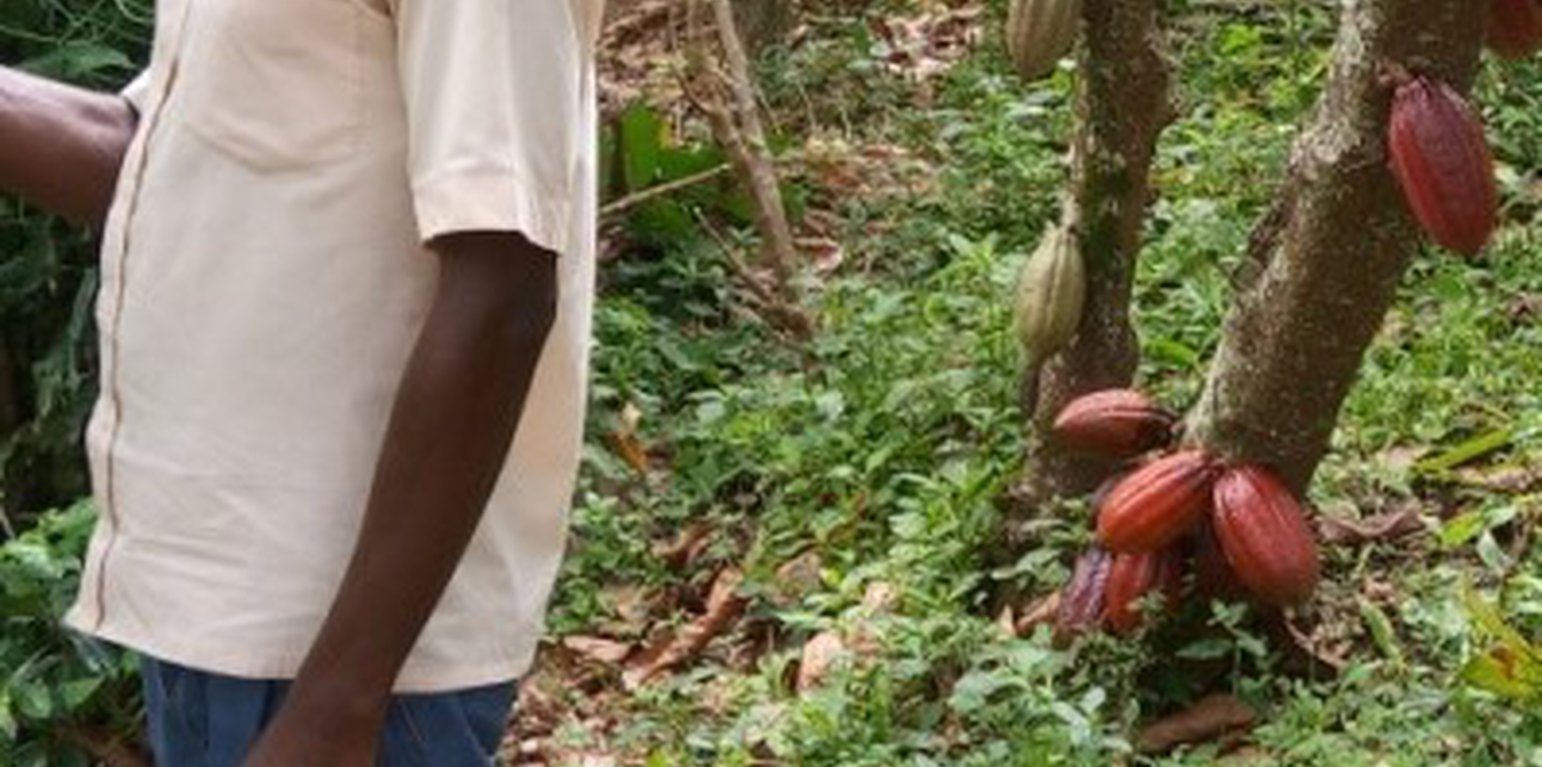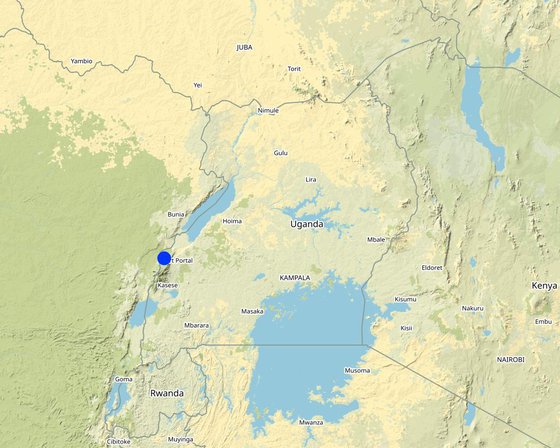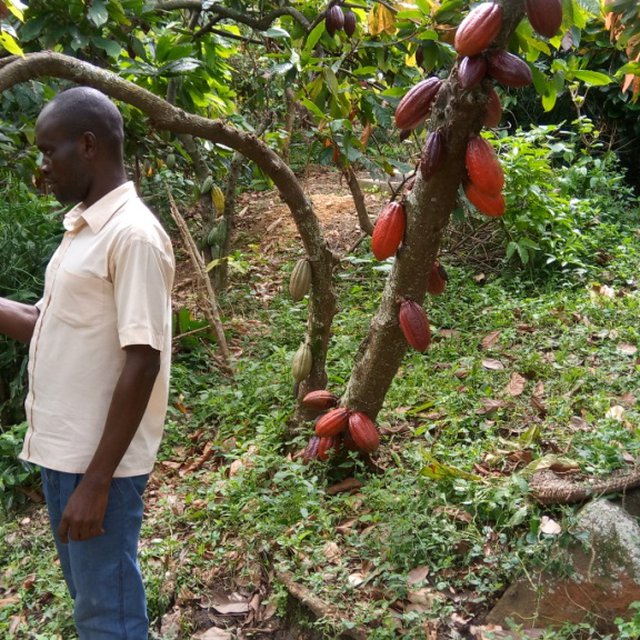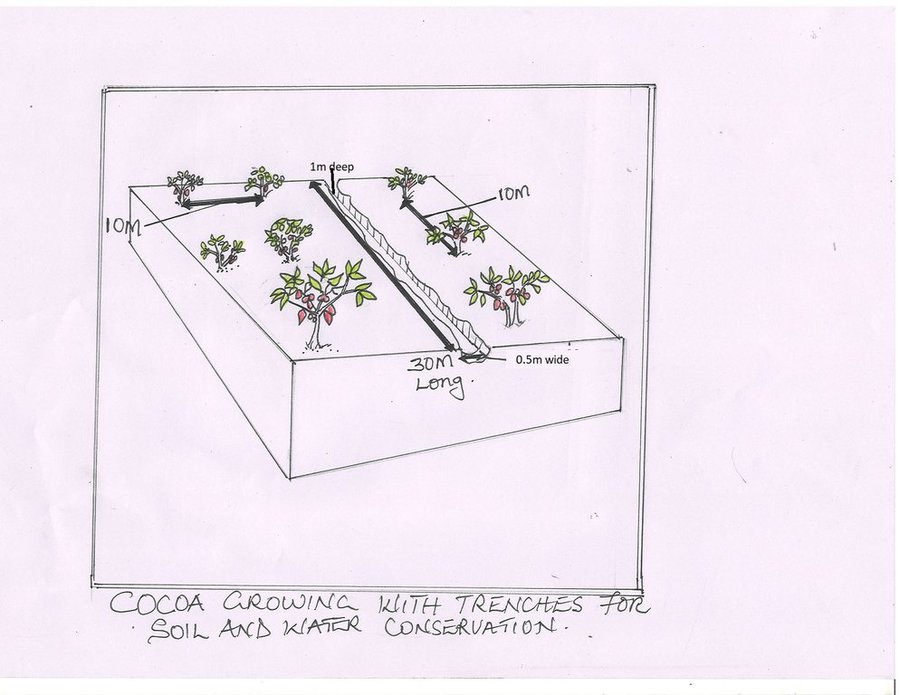



Farmers today face a lot of problems in practicing agriculture and one of them is soil erosion. In hilly areas like Bundibugyo, soil and water runoff is reported to be of paramount importance to farmers growing cocoa on steep slopes. To counteract the problems associated with such cultivation farmers have come up with a strategy of constructing contour trenches. Contour trenches are dug structures, perpendicular to the slopeline, of a certain depth and width in a field of any kind. In this way runoff soil, together with run-off water is caught in such structures and thereby, kept on the field.
In this plantation, the technology reduces water runoff, increases water infiltration and also improves soil fertility. As reported by a cocoa farmer, trenches should be dug in dry season. The numbers of trenches in the plantation depends on the size and the slope of the land. Normally in an acre, 10-15 trenches can be constructed. On establishment of these trenches in hilly area, they are 1m deep, 0.5m wide and 30m long on average along horizontal contour lines. Necessary materials to construct these trenches include a measuring tape, ropes, spades, and hoes.
The soils can be stabilized such that they are not washed into the trenches again. Some grasses are therefore planted on the sides of the trenches. After allocating suitable places for trenches, labour is locally available. However, some farmers who grow cocoa don’t want to dig trenches because it is laborious and requires larger land sizes.
Management is relatively cheaper as it only involves, emptying the trenches periodically.

Localização: Bundibujo District, Western Region, Uganda
Nº de sites de tecnologia analisados: Local único
Difusão da tecnologia: Uniformemente difundida numa área (approx. 0,1-1 km2)
Data da implementação: mais de 50 anos atrás (tradicional)
Tipo de introdução





Especificações técnicas
Autor: Prossy Kaheru
Trenches are normally established during the dry season on small pieces of land usually an 1 acre.
Slopes range from 16 -30 % in areas with high rainfall. The dimension of the trenches are 1m deep, 0.5m wide and 30m long. |
|||||||||||
| Especifique a entrada | Unidade | Quantidade | Custos por unidade (n.a.) | Custos totais por entrada (n.a.) | % dos custos arcados pelos usuários da terra |
| Mão-de-obra | |||||
| Digging trenches | persons | 15,0 | 10000,0 | 150000,0 | 100,0 |
| Equipamento | |||||
| Hiring a hoe | piece | 1,0 | 1000,0 | 1000,0 | 100,0 |
| Hiring a slasher | piece | 1,0 | 1000,0 | 1000,0 | 100,0 |
| Hiring a spade | piece | 1,0 | 1000,0 | 1000,0 | 100,0 |
| Hiring a wheel barrow | piece | 1,0 | 10000,0 | 10000,0 | 100,0 |
| Custos totais para a implantação da tecnologia | 163'000.0 | ||||
| Especifique a entrada | Unidade | Quantidade | Custos por unidade (n.a.) | Custos totais por entrada (n.a.) | % dos custos arcados pelos usuários da terra |
| Mão-de-obra | |||||
| Clearing trenches after rains | Man day | 15,0 | 10000,0 | 150000,0 | 100,0 |
| Custos totais para a manutenção da tecnologia | 150'000.0 | ||||
Cocoa plantations with trenches increased the quantity in production as moisture is retained.
Soil degradation can be significantly reduced.
Trenches reduce the run off of water thereby reducing on-site and off-site erosion impact.
Water runoff is reduced by trenches.
Water runoff is reduced by trenches.